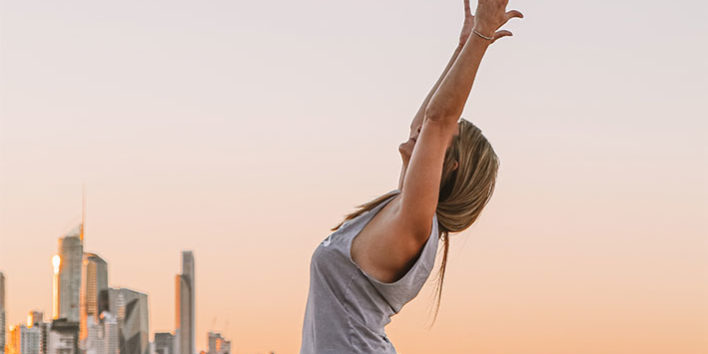Did you know that 12 minutes of yoga a day can be more effective than any drug to increase bone density? Professor Loren M Fishman, a physiatrist at Columbia University has spent years gathering evidence on the impact of Yoga on bone health.
He determined that: “Yoga is safe, even for people who have suffered a loss of important bone mass […] Yoga puts more pressure on the bones than gravity and by opposing one group of muscles against others, it stimulates the osteocytes, the cells that make up the bones.”
Osteoporosis is a disease in which the bones become thinner and less dense. Therefore, they weaken and are more prone to fractures. Osteoporosis can develop in anyone, although it is more common in adult women who are already in menopause or perimenopause.
Osteoporosis is known as a silent disease, and is closely related to menopause. When a woman reaches this stage in life, estrogen levels decrease and this can lead to bone loss. That is why it is important to reach this period of life with high bone density, so there is less chance of developing bone-related problems.
Osteopenia is a previous state, where bone mass decreases, but within levels that do not pose such a high risk of breakage. Therefore, people suffering from osteopenia can participate in most sports activities, while those diagnosed with osteoporosis should avoid high-impact exercises such as jumping, aerobics, steps or dynamic load-bearing movements.
Why is yoga so effective against osteoporosis?
Unlike other physical activities, yoga through different postures, supporting one’s own weight and defying gravity, activates muscles and bones in most of the body, not just in a localized area. Furthermore, Yoga stresses the bones in all directions and angles, and the different postures oppose some muscles against each other, stimulating the connection between muscles and bones and in turn stimulating the cells responsible for building bone.
Another key reason why yoga is more effective than other physical activities is the time a posture is held. It is shown that after 12 sustained seconds, activating and stressing muscles and bones, bone density markers increase.
Yoga practice also has a muscle-releasing power and an anti-inflammatory effect, while high-impact activities cause inflammation.
Finally, yoga offers other benefits such as improving posture and balance, which help prevent possible falls and breaks.
What to do and not do when practicing Yoga, when suffering from Osteoporosis
- Hold the poses for at least 30 seconds or 15 breaths.
- Move from one position to another slowly.
- Do gentle push-ups without rounding the back.
- Do gentle lateral twists and bends.
- Preferably practise neutral postures for the back.
- Include stretches, especially of the spine, to create space between the vertebrae and thus avoid crushing and fracture.
- Avoid ab exercises that curve the back.
- Avoid extreme twists, especially at the hips.
- Avoid exaggerated back extensions.
- Do not abuse complicated inversions, if you do not have an advanced practice, to avoid unfortunate falls. Instead, practice inversions such as downward facing dog or raised legs to benefit from the reversal of blood flow.
Your recipe: Easy and accessible yoga sequence to combat osteoporosis
Dr. Loren Fishman, after years of experience and research on bone health, developed a method of yoga, based on a sequence of simple poses, accessible to anyone. Practiced with the correct alignment and on a regular basis, this sequence has proven to be highly effective against osteoporosis, as well as providing peace of mind and well-being.
This sequence can be practiced daily for 12 minutes, holding each pose for 30 seconds on each side:
- VRKSASANA or tree pose.
- TRIKONASANA or triangle pose.
- VIRABHADRASASA or warrior II.
- PARSVAKONASANA or side angle pose.
- PARIVRTTA TRIKONASANA or torsion triangle.
- SLAMBHASANA or lobster pose.
- SETU BANDHASANAor the bridge.
- SUPTA PADANGUSTHASANA I or lying up leg stretch.
- SUPTA PADANGUSTHASANA II or leg stretch lying to the side.
- MATSYENDRASANA or medium twist on the ground.
- MARICHYASANA II or twisting pose on the floor with one leg straight.
- SAVASANA or posture of the body.
Globally, over 200 million people suffer from this silent disease. Likewise, a good part of the population does not have access to medical professionals or medicines. Therefore, an alternative, like yoga, easy, accessible to anyone, anywhere, with a low cost and minimal risk, represents a very desirable solution.
Amparo Hernandez.
Body Health. Lifestyle. Menopause. Yoga Women’s Health.
If you enjoyed this article and would like to help us support this beautiful project so we can continue creating amazing content; please help us by donating as little as the cost of a coffee or as much as you like.
and






